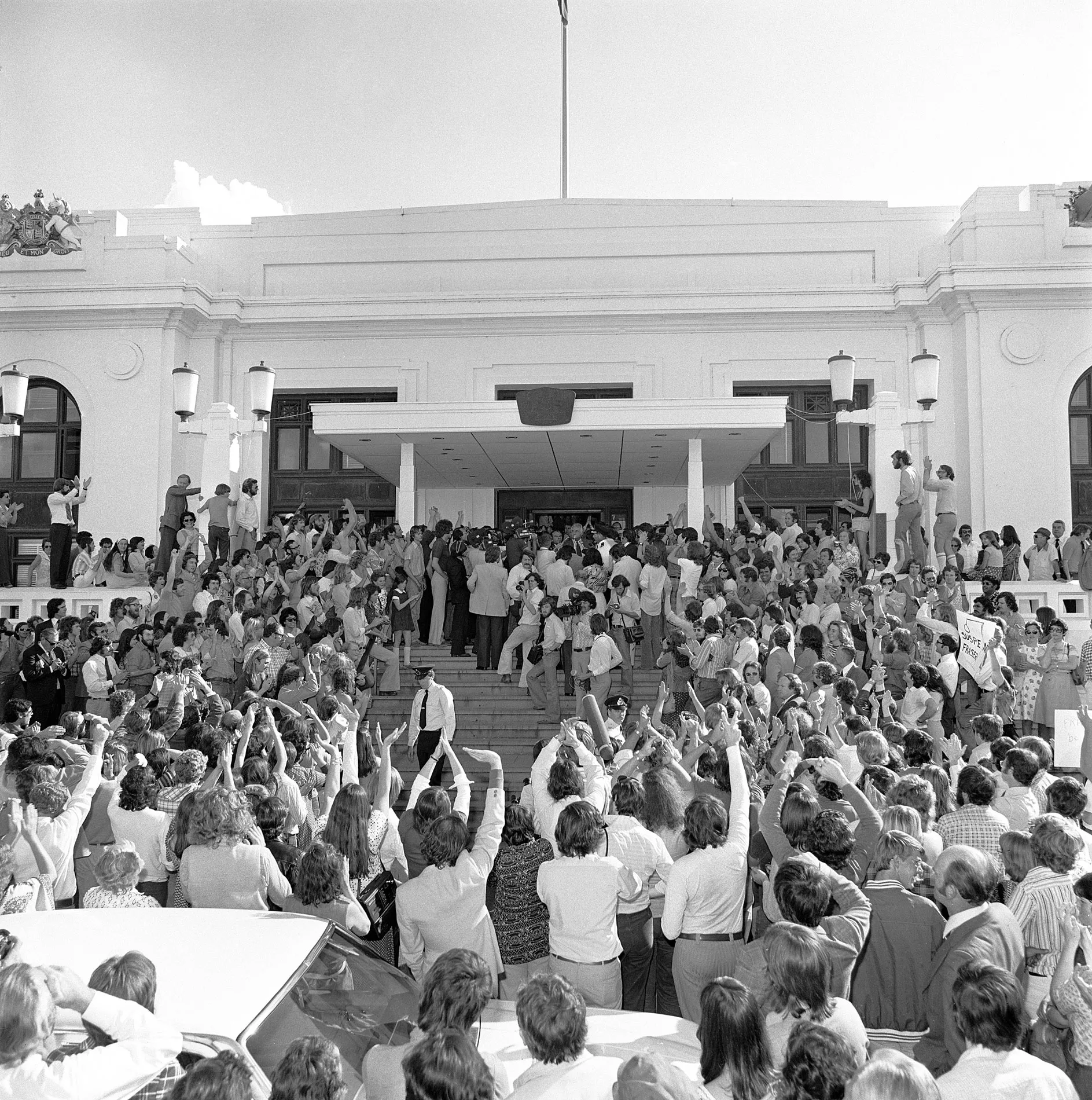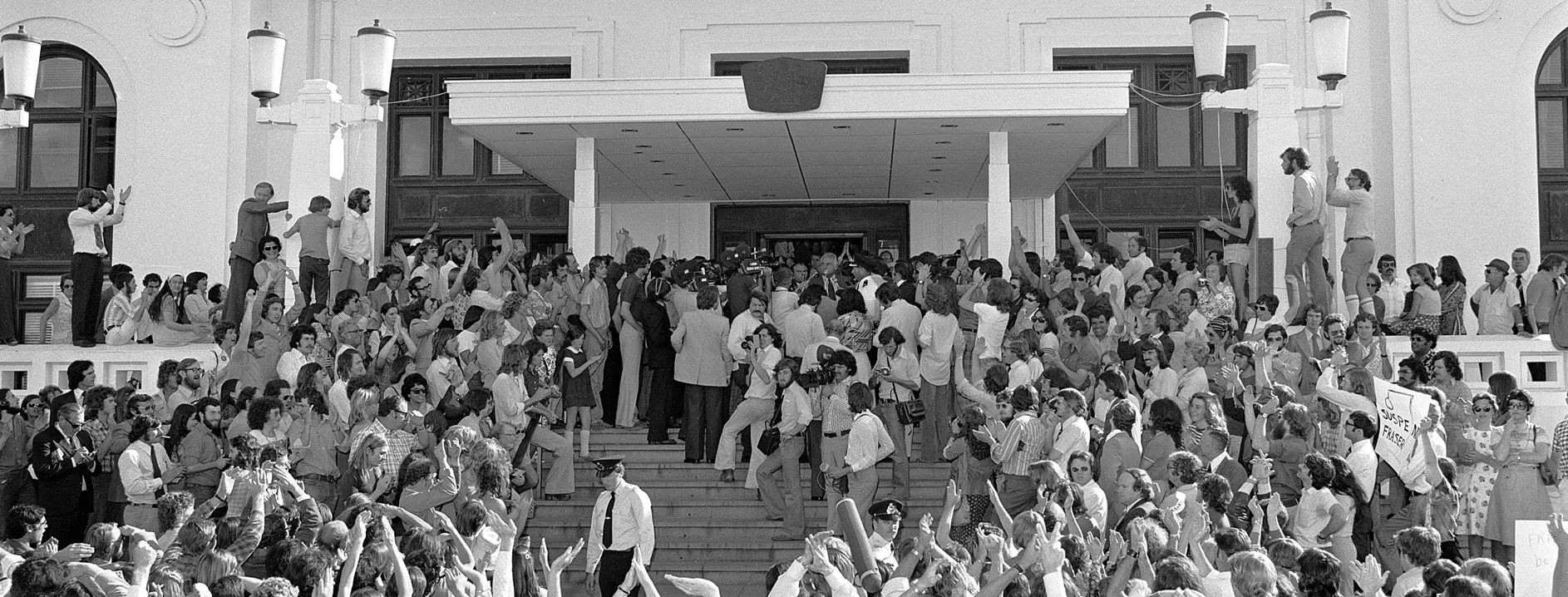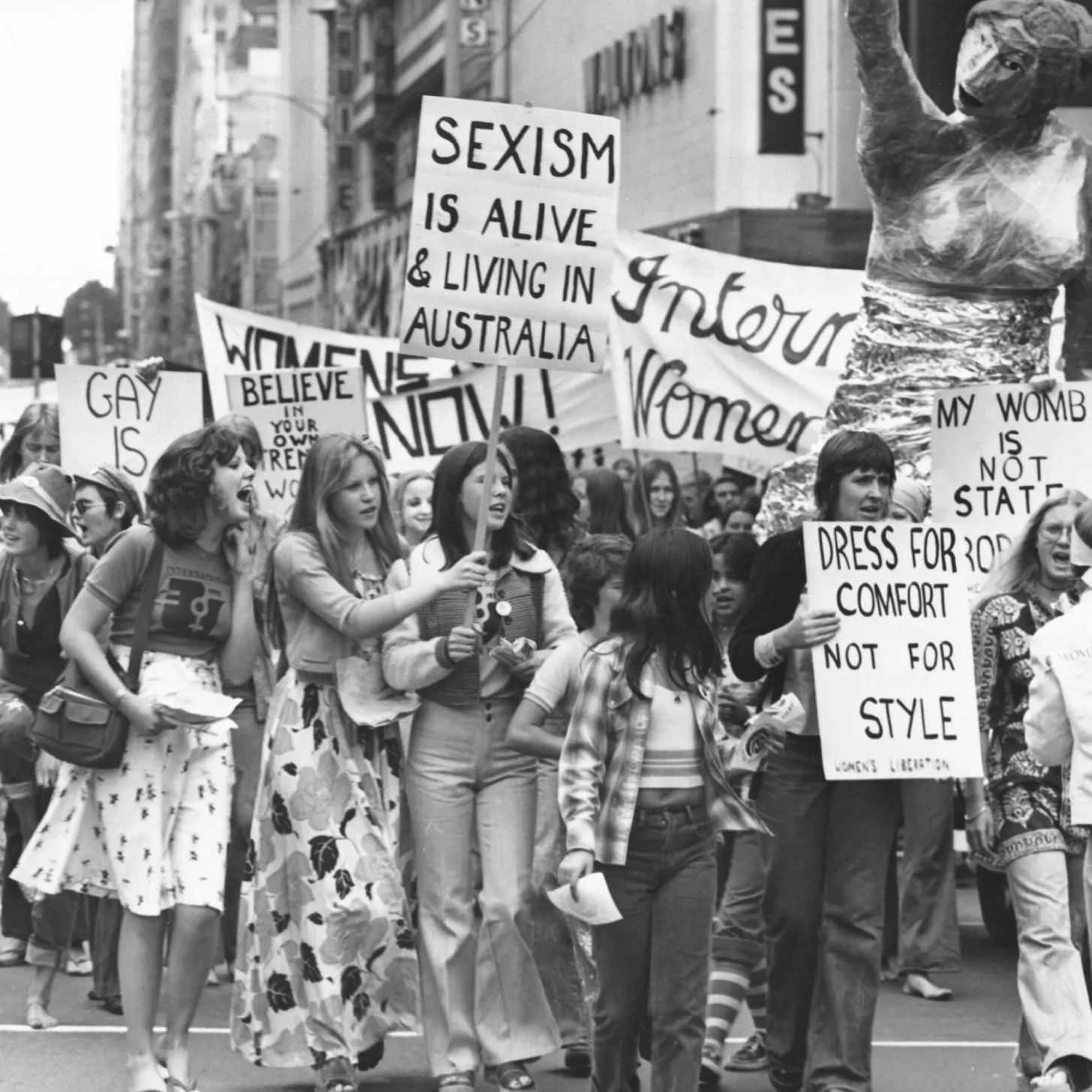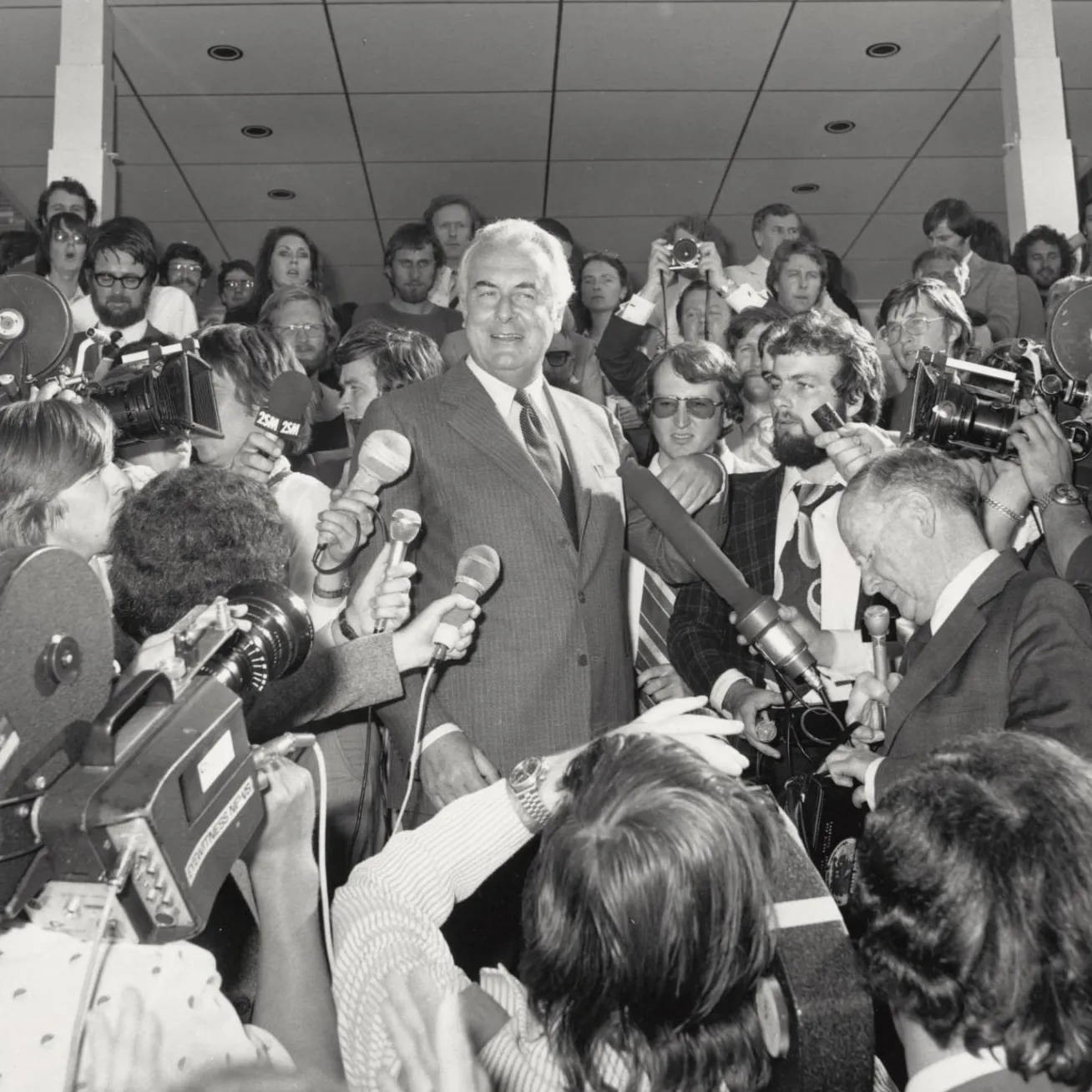Could the 1975 dismissal happen elsewhere?
Is the dismissal of an elected government unique to Australia?
What was the dismissal?
On 11 November 1975, Governor-General Sir John Kerr used his 'reserve powers' to terminate Gough Whitlam's appointment as prime minister and that of his government. Kerr appointed the Leader of the Opposition, Malcolm Fraser, in Whitlam's place. Later that day, a proclamation dissolving parliament was read on the steps of Parliament House by the Governor-General's Official Secretary, David Smith. The dismissal of Whitlam and his government is the first and, so far, only time an Australian prime minister and their government has been dismissed.
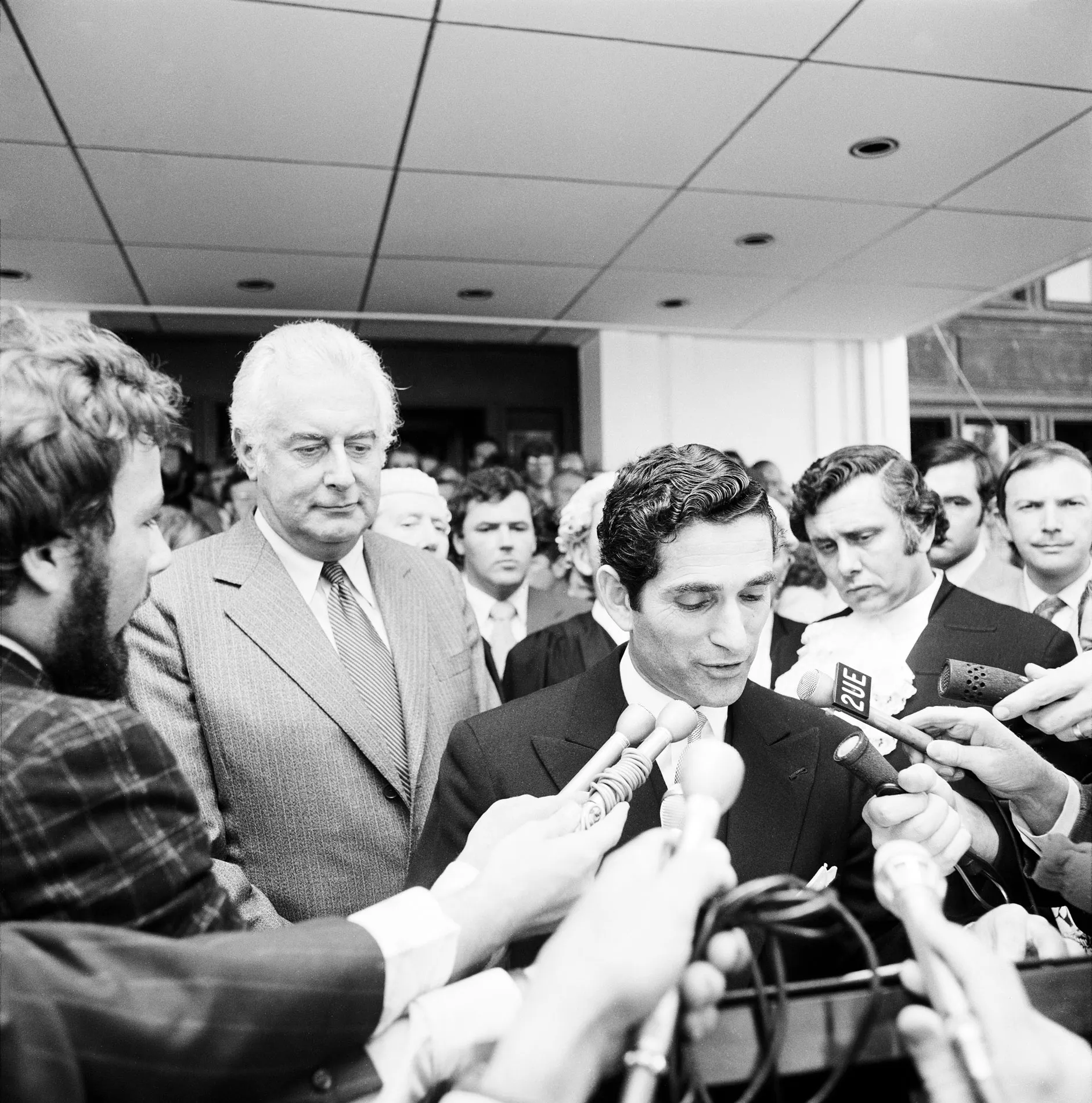
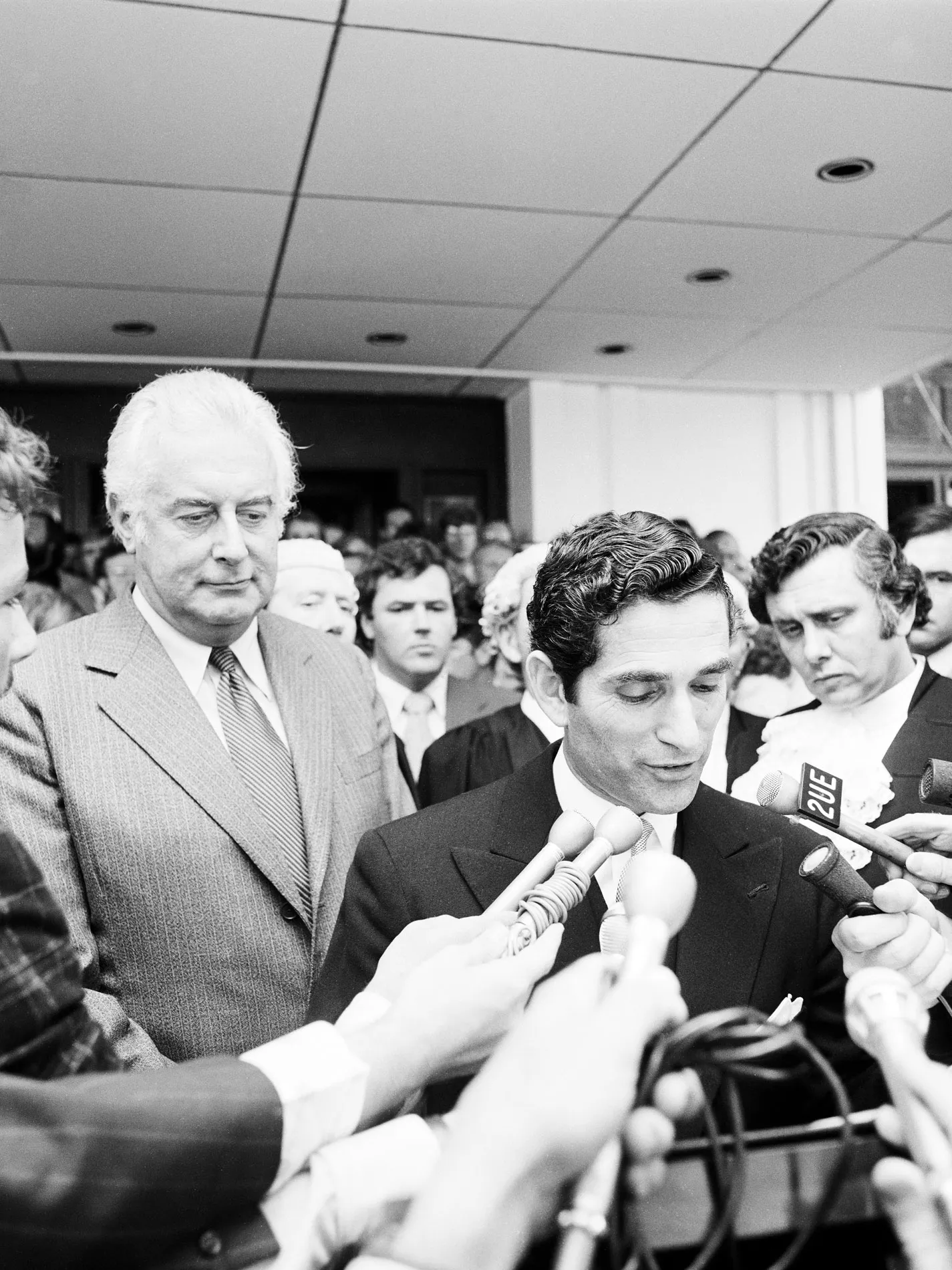
David Smith reading the proclamation dissolving parliament outside Parliament House with Gough Whitlam looking over his shoulder, 11 November 1975. Photograph NAA: A6180, 13/11/75/45
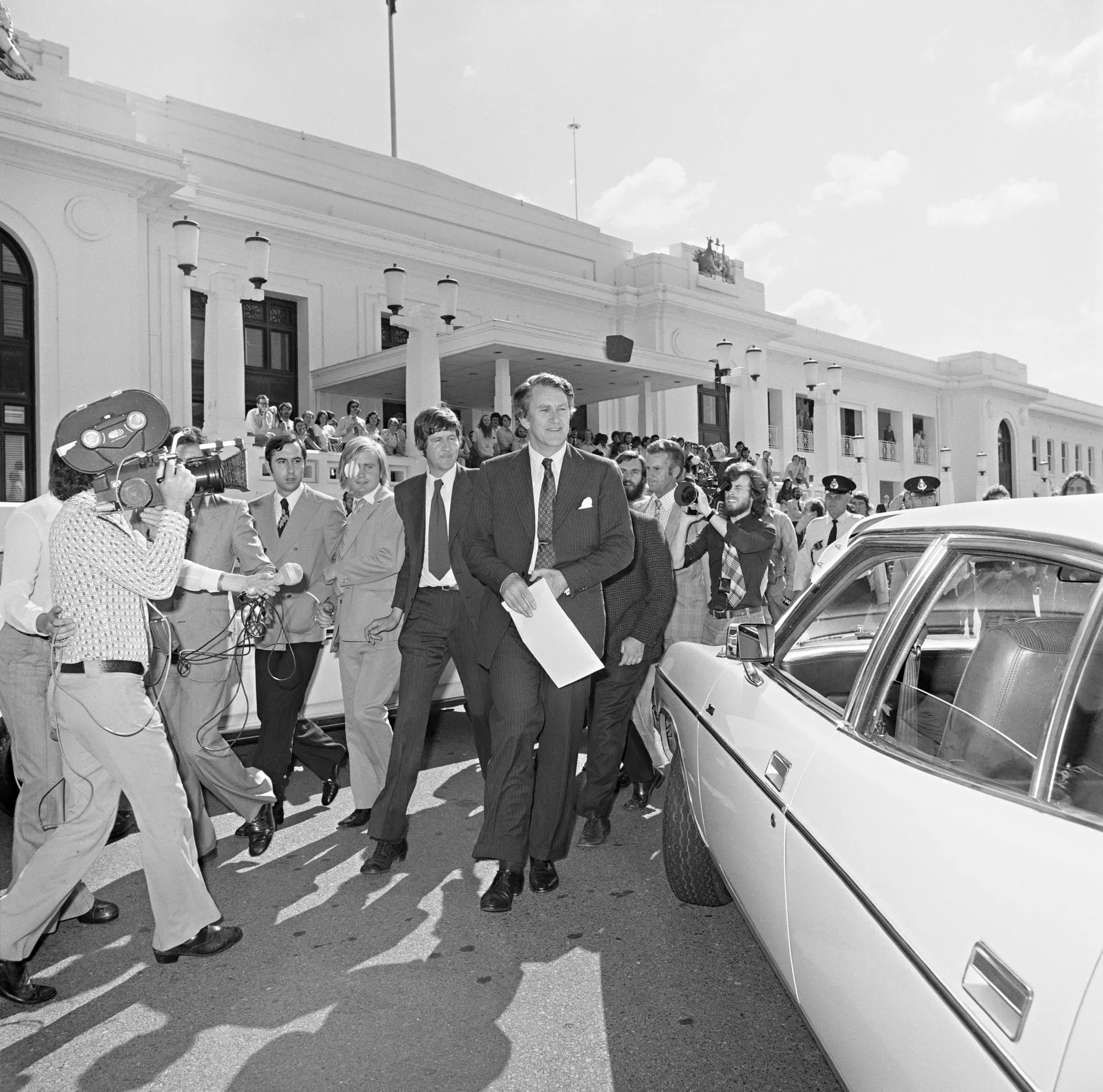
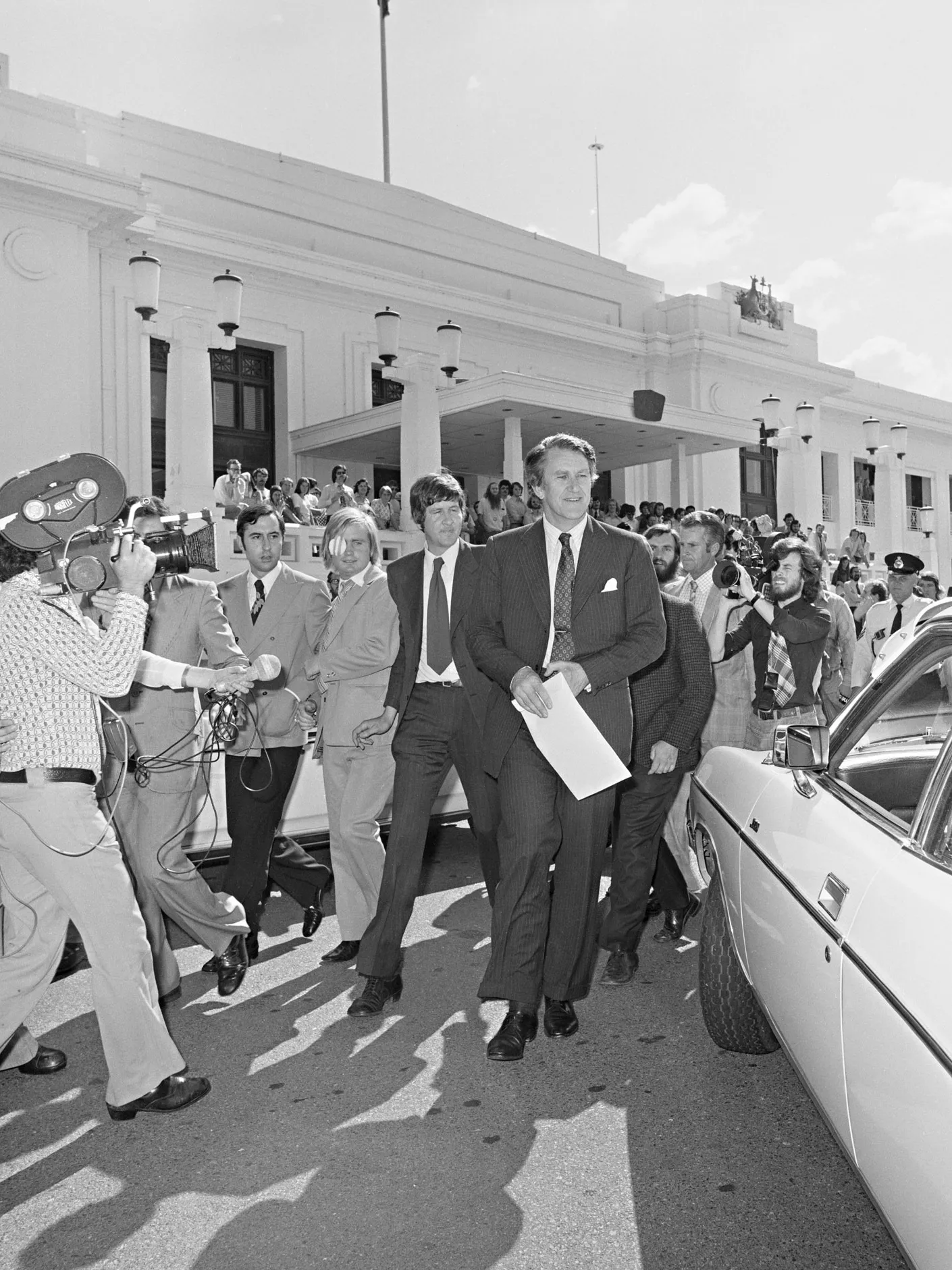
Malcolm Fraser leaving Parliament House after the dissolution of parliament, 1975. Photograph NAA: A6180, 13/11/75/41
Why did the Governor-General dismiss the Whitlam government?
Whitlam's Labor government and the Coalition led by Fraser were in a deadlock over the budget. Fraser had delayed the passage of supply bills through the Senate until the government agreed to call an election. Whitlam had refused to call an election and repeatedly sent the supply bills back to the Senate, needing just one senator to cross the floor to vote to pass the bills. No senators crossed the floor, and the deadlock continued for weeks. The government's money would run out unless the deadlock was broken.
In his statement released on the day of the dismissal, Governor-General Sir John Kerr explained his decision to terminate Whitlam's commission as his 'duty' due to Whitlam's failure to secure supply and subsequent failure to resign or call an election.
- Governor-General Sir John Kerr, 11 November 1975
Following the dismissal of Whitlam and appointment of Fraser as caretaker prime minister, Fraser secured supply, parliament was dissolved, and a double dissolution election was called for 13 December. The budget deadlock was resolved, but intense debate over the dismissal of an elected prime minister and government and the implications for democracy in Australia arose and continue today.

Prime Minister Malcolm Fraser, Governor-General Sir John Kerr and Deputy Prime Minister Doug Anthony leaving Government House after the swearing in of Malcolm Fraser's Cabinet, 1975.
Photograph NAA: A6180, 13/11/75/1
Could an Australian government be dismissed again?
Yes. The provisions of the Australian Constitution that allowed Whitlam and his government to be dismissed have not been changed. A deadlock over supply could occur again, and the governor-general still holds reserve powers to break the deadlock by dismissing the prime minister and government. However, it's unlikely to happen again as the dismissal happened following a specific series of events unique to the time.
Have there been any other dismissals in Australia?
There has been one other instance of a dismissal in Australia, when a state governor dismissed a premier. In May 1932 during the Depression, the New South Wales (NSW) Labor government led by Premier Jack Lang was vocally against the federal government's policies, including paying back state debts. The Commonwealth passed laws forcing NSW to pay, and Lang refused, instead withdrawing £1 million of NSW government funds in cash and storing it at the Sydney Trades Hall to stop the federal government getting it. Governor Sir Philip Game believed this to be illegal and warned Lang that if he persisted, he would be dismissed. Lang persisted and Game dismissed him, appointing the Opposition, led by Sir Bertram Stevens (Lang's alleged nemesis even before he went into politics), to government. Stevens won the June election in a landslide.
Could a dismissal happen in other countries?
Yes. Examples include countries such as the UK, Canada and New Zealand, who follow the Westminster system of government, or versions of it.
In the UK, the monarch has 'prerogative powers', one being the power to appoint and dismiss ministers, including the prime minister. William Lamb, 2nd Viscount Melbourne, was appointed UK prime minister in July 1834. On 14 November he was sacked by King William IV; Melbourne's reformism as a Whig was unpopular with the Tory-supporting King. A brief Tory administration led by Sir Robert Peel led to a new election, which Melbourne won. No monarch since has appointed a prime minister without parliament’s consent.
Canada, like Australia, has a governor-general with 'reserve powers', including the right to appoint or dismiss a prime minister. No governor-general of Canada has done so to date. However, a governor-general has refused to accept the advice of their prime minister. In 1926, Prime Minister William Lyon Mackenzie King advised Governor General Lord Byng to dissolve parliament to trigger an election. Byng refused the request. King resigned (as convention says), and Byng appointed Arthur Meighan, the Leader of the Opposition, prime minister. Meighan lost a confidence vote and advised an election. Byng agreed to the election, which King won.
What happens in countries that don't have a mechanism to break budget deadlocks?
In the US there is no mechanism like reserve powers to resolve disputes over budget issues. Budgets must be approved by both houses of government, Congress, as well as the president. If there is a deadlock over the budget, the government shuts down.
During a shutdown, government services deemed essential – law enforcement, in-hospital medical staff, immigration and customs – are supposed to continue as normal, but most staff work without pay until the government reopens, so these services are often disrupted. A government shutdown in December 2018 ended, predominantly, after a shortage of air traffic controllers, who called in sick after working without pay for a month, caused major disruptions to flights.
Non-essential government services are suspended and thousands of workers are put on unpaid leave during shutdowns. In October 2025, a stalemate between Republicans and Democrats in Congress over the budget led to a government shutdown. This shutdown forced museums, national parks and monuments to reduce hours or close. The food stamps program, which provides assistance to millions of people, ran out of money.
To break a budget deadlock and reopen the government, the two major parties need to find a compromise.
What are 'reserve powers'?
A reserve power is a discretionary power that a head of state or their representative may use without the approval of another section of the government. In Australia, the governor-general's reserve powers arise from their designation as the representative of the head of state, the reigning monarch. Reserve powers are not laid out in Australia's Constitution but instead are guided by convention and tradition – the right to dismiss a prime minister under certain circumstances is generally agreed to be one of these powers.
What is the Westminster system of government?
Originating in the United Kingdom, the Westminster system is a parliamentary democracy system where the government is accountable to an elected parliament. There is a ceremonial head of state (the monarch or representative of the monarch), a head of government (usually a prime minister), and a two-house parliament, with the majority party in the lower house forming the government.

